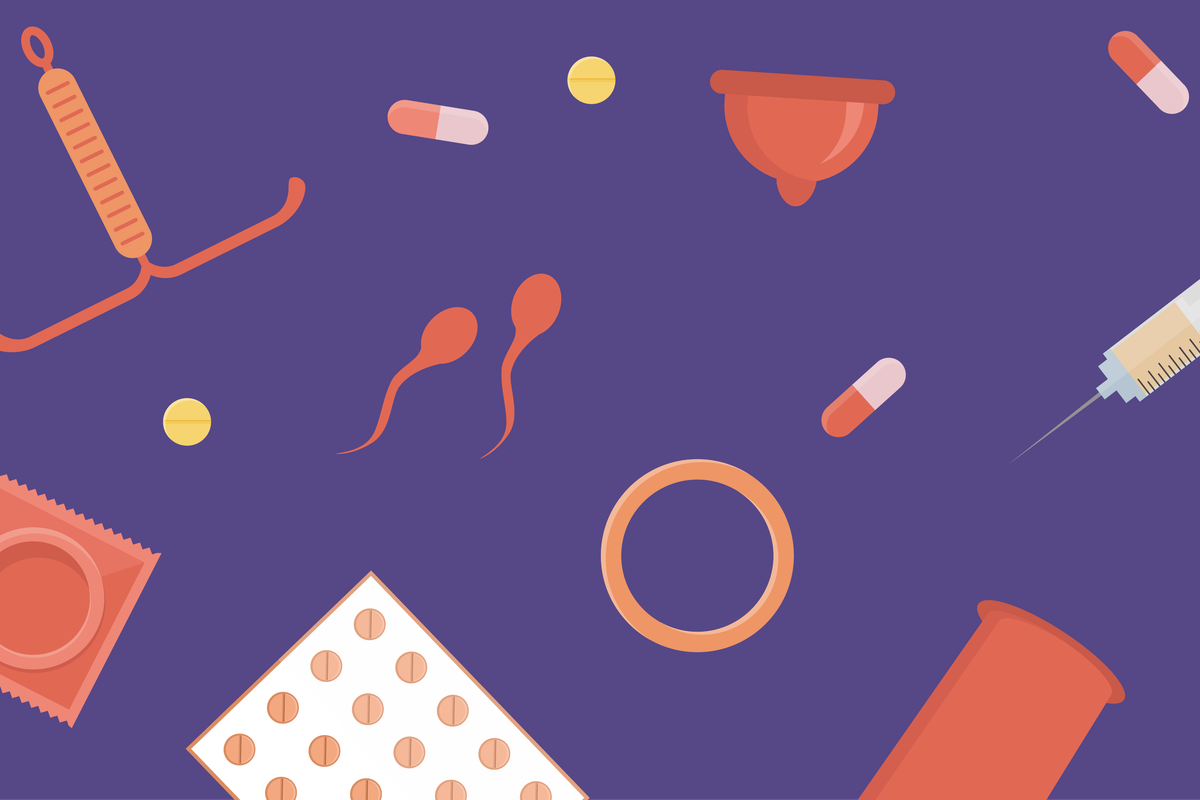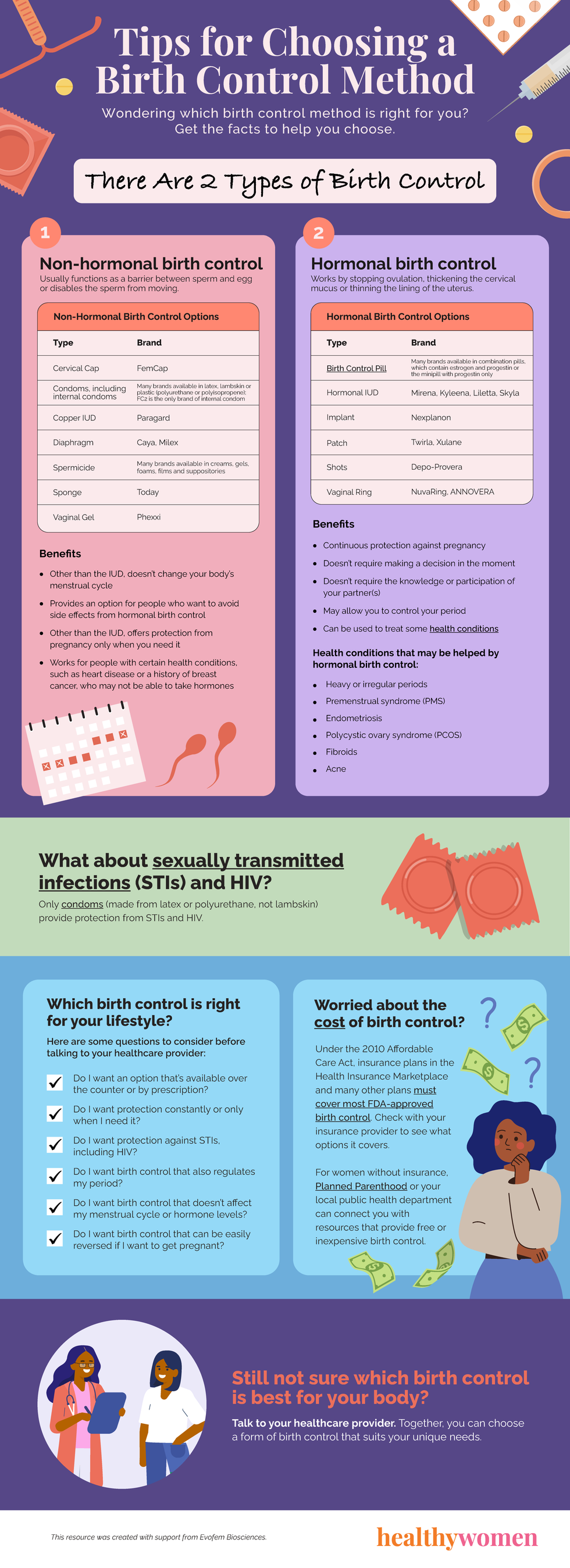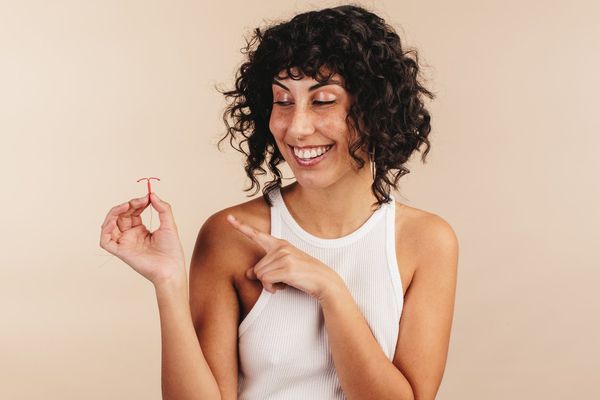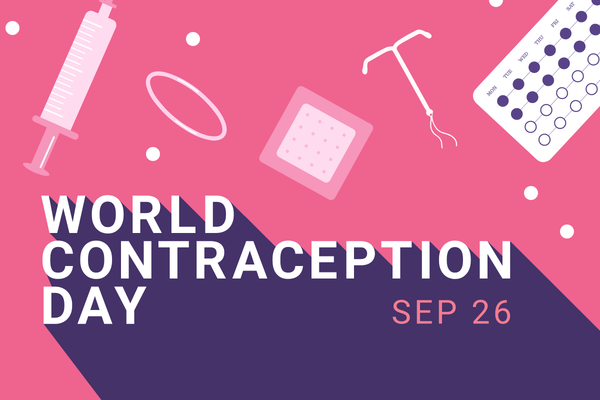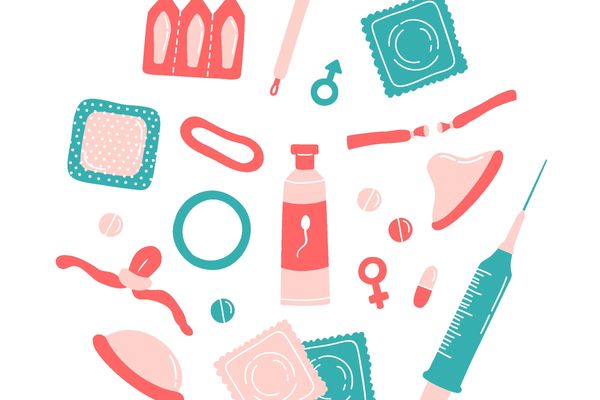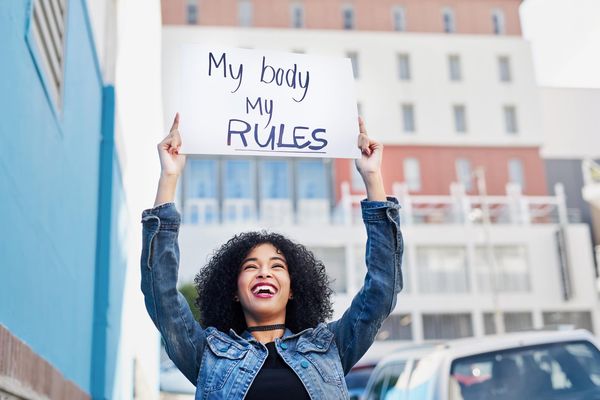There Are 2 Types of Birth Control
Non-hormonal birth control
usually functions as a barrier between sperm and egg or disables the sperm from moving.
Options include regular condoms, the internal condom (FC2) sponge (Today), cervical cap (FemCap), copper IUD (Paragard), diaphragm (Caya and Milex) and vaginal gel (Phexxi).
Benefits
- Other than the IUD, doesn’t change your body’s menstrual cycle
- Provides an option for people who want to avoid side effects from hormonal birth control
- Other than the IUD, offers protection from pregnancy only when you need it
- Works for people with certain health conditions, such as heart disease or a history of breast cancer, who may not be able to take hormones
Hormonal birth control
Works by stopping ovulation, thickening the cervical mucus or thinning the lining of the uterus.
Options include birth control pills, vaginal ring (NuvaRing and ANNOVERA), stick-on patches (Xulane and Twirla), implants (Nexplanon), shots (Depo-Provera) and hormonal IUDs (Mirena, Kyleena, Liletta and Skyla).
Benefits
- Continuous protection against pregnancy
- Doesn’t require making a decision in the moment
- Doesn’t require the knowledge or participation of your partner(s)
- May allow you to control your period
- Can be used to treat some health conditions
Health conditions that may be helped by hormonal birth control:
- Heavy or irregular periods
- Premenstrual syndrome (PMS)
- Endometriosis
- Polycystic ovarian syndrome (PCOS)
- Fibroids
- Acne
What about sexually transmitted infections (STIs) and HIV?
Only condoms (made from latex or polyurethane, not lambskin) provide protection from STIs and HIV.
Which birth control is right for your lifestyle?
Here are some questions to consider before talking to your healthcare provider:
- Do I want an option that’s available over the counter or by prescription?
- Do I want protection constantly or only when I need it?
- Do I want protection against STIs, including HIV?
- Do I want birth control that also regulates my period?
- Do I want birth control that doesn’t affect my menstrual cycle or hormone levels?
- Do I want birth control that can be easily reversed if I want to get pregnant?
Worried about the cost of birth control?
- Under the 2010 Affordable Care Act, insurance plans in the Health Insurance Marketplace and many other plans must cover FDA-approved birth control. Check with your insurance provider to see what options it covers.
- For people without insurance, Planned Parenthood or your local public health department can connect you with resources that provide free or inexpensive birth control.
Still not sure which birth control is best for your body? Talk to your healthcare provider. Together, you can choose a type that suits your unique needs.
This resource was created with support from Evofem Biosciences.
- Clinically Speaking: Questions to Ask Your HCP About Birth Control Methods ›
- Clinically Speaking: Questions and Answers About Choosing Hormonal Birth Control ›
- Hormonal Birth Control ›
- Hormonal vs. Non-Hormonal Contraception: What’s the Difference? ›
- FDA Approves First OTC Birth Control Pill - HealthyWomen ›
- Modern Birth Control Methods - HealthyWomen ›

